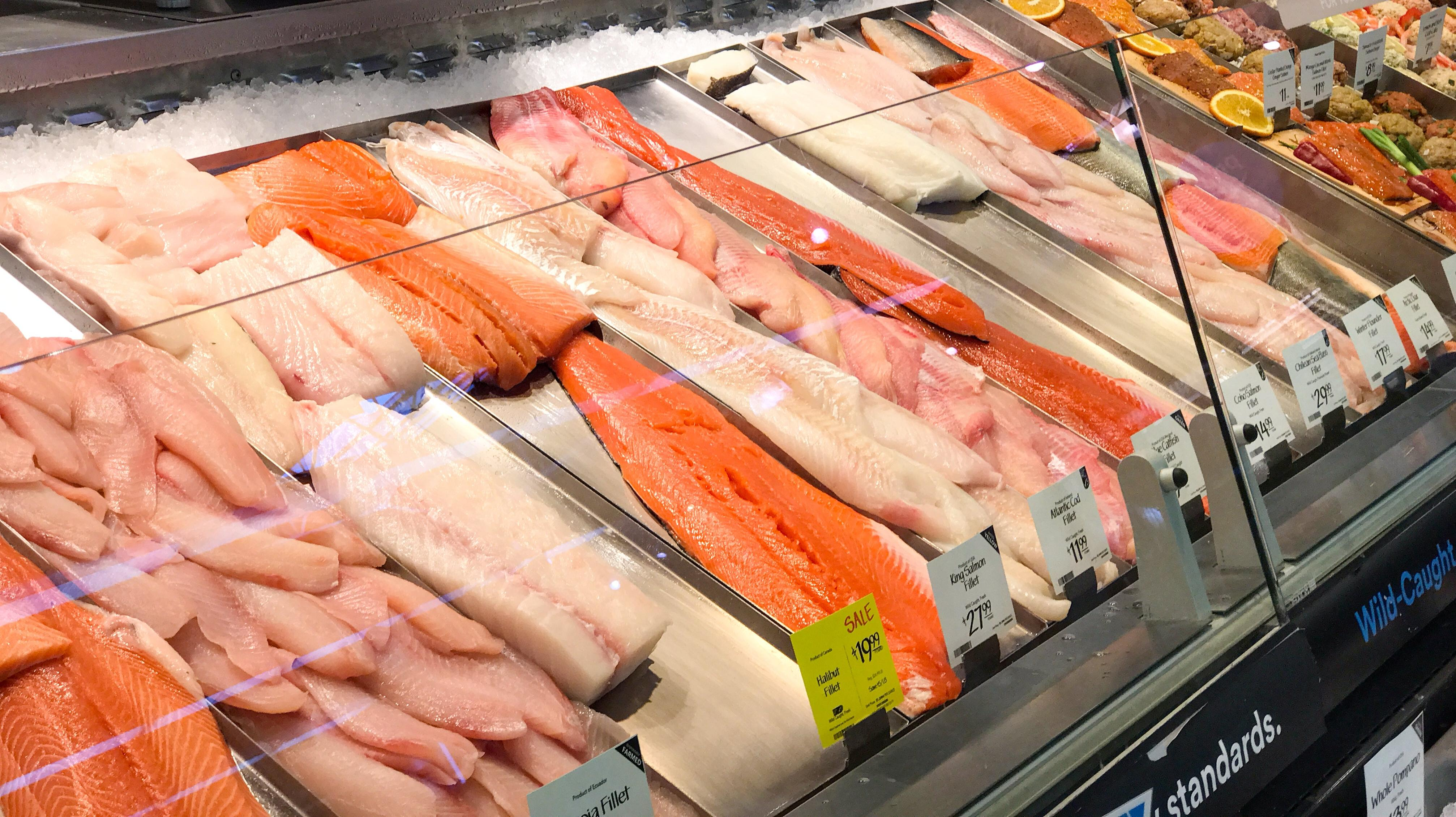'Fresh' Fish Isn't Always Better Than Frozen
That fish at the seafood counter isn't as fresh as you might think.
There's something pretty irresistible about a beautiful fresh seafood display at a grocery store. That colorful fish calls to you, begging for you to take some home. The alternative is the frozen cabinet with all the stiff planks of fish filets, which never seem quite as appealing. It probably seems like buying the seafood in the display is the better idea since it's fresh, right? Well, not so fast. There's a few things you want to take under consideration when buying fish at the supermarket.
Is the fresh fish really “fresh?”
The "fresh" fish in the display case is almost always just thawed from frozen. In fact, a few of you emailed me about this fact after I wrote about grocery shopping tips the other day. (Thank you all, by the way.)
That means the fish on ice in the display could have been sitting there for much longer than you think, but there's no way for you to know for sure. And the longer it's been sitting out, the further its quality will degrade—its texture and flavor will continue to suffer the longer it sits on ice. It's also an open breeding ground for bacteria becaus it's exposed to air, which is obviously no good. I'm not saying to avoid it, just that you'll want to stick to some key guidelines when picking it up.
What should you look for in fresh whole fish or fillet?
First of all, look for a cut of fish that's firm and shiny. A dull-looking piece is likely to have been thawed (but should be just fine to eat). Any discoloration around the edges isn't good, so don't buy those pieces.
The smell test is your friend. If the fish smells strong, or ammoniated, skip it. A lot of guides tell you to avoid fish that smells fishy, but the thing is, all fish has a scent to it. When the fish smells particularly strong, however, you'll want to bail on it.
Whole fish is delicious and a cool centerpiece to a meal. If you're getting a whole one, check the eyes to make sure they're glassy and transparent. Old whole fish will have milky or cloudy eyes, which you'll be able to spot from a mile away.
Frozen seafood might even be better than fresh
So that does beg the question, is frozen seafood inferior? The short answer is a resounding no. Much of it is flash frozen shortly after being caught, sometimes even on the very boat it was gathered on, which captures its freshness greatly. Government website FishWatch says that 70-85% of seafood in the United States is imported, and if it's coming from far away, you typically want it to be frozen for transport.
Then there's the added benefit of shelf stability. If it's properly vacuum sealed, it should last you for months, if not at least a year, in the freezer. And though it might seem counterintuitive, you can actually cook fish straight from frozen. This guide from Eater says that cooking fish from its icy state is even easier to manage than a fresh version, because it's harder to overcook it that way.
What should you look out for in frozen fish?
Shopping for frozen fish is pretty easy. There are a few things you'll want to look for in a package of frozen fish, but this is all fairly common sense.
- Look for ice particles within a package. If there are large crystals, there's a chance that it thawed out partially (or completely) and was refrozen. Don't buy a package like that.
- Make sure the packaging is intact. This is easy, just make sure nothing in it is open, including the plastic itself.
- And of course, make sure it is indeed frozen; properly stored frozen fish is as hard as a rock with no obvious soft spots that have thawed out at all.
Almost all the seafood I buy is frozen, either out of convenience or just because it looks plain better than the items in the display. As for the stuff behind the glass, I just leave the pretty fish there for window shopping or as inspiration for what I'll be eating for dinner later.
